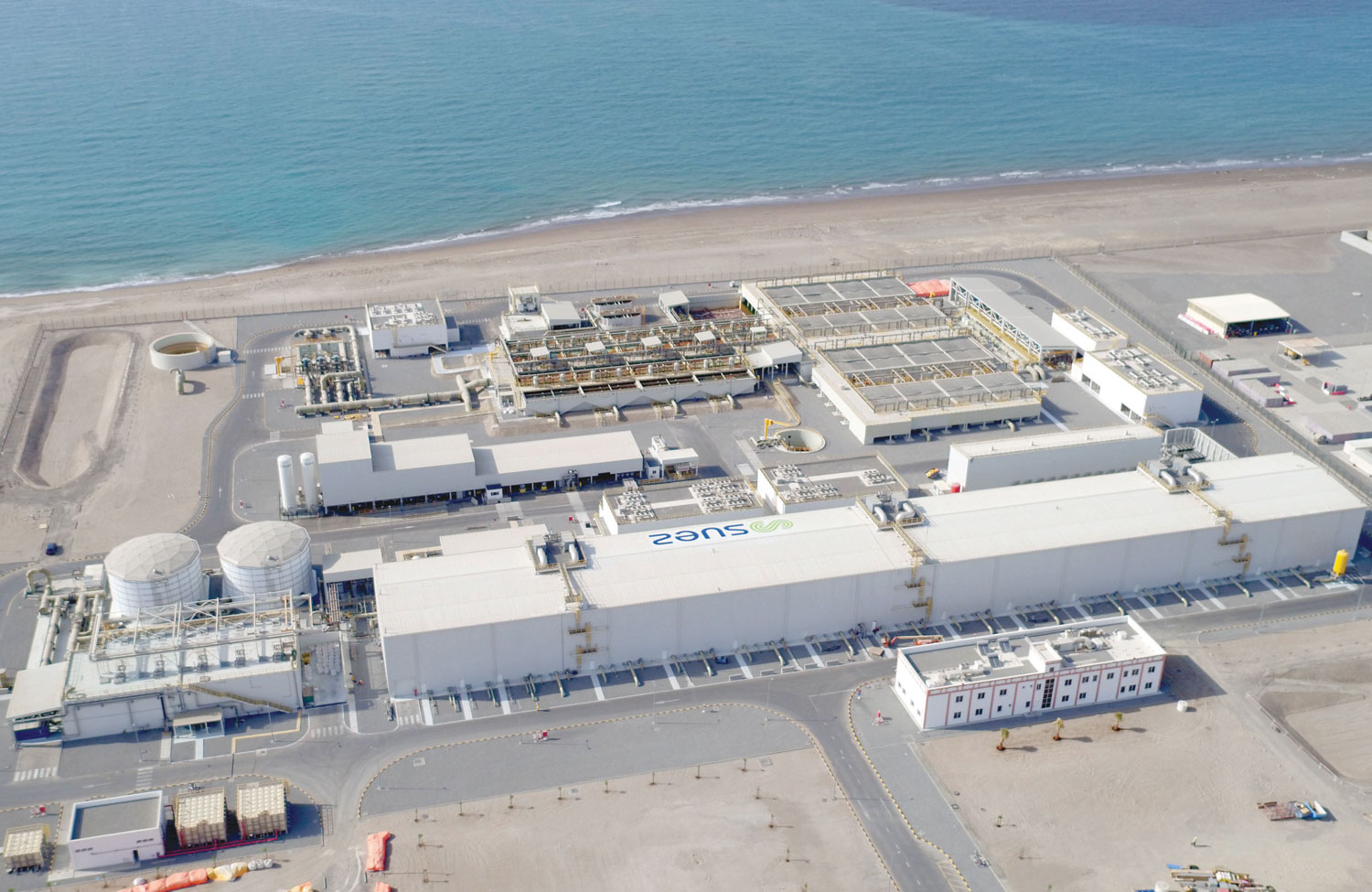

MUSCAT, AUG 4 - A string of new water desalination projects, currently under various stages of planning, tendering and development at key locations across the Sultanate, will help supplant older, less efficient projects nearing the end of their operational life, according to the Public Authority for Electricity and Water (Diam). “Diam believes that desalination plants are the strategic choice for providing safe drinking water of high quality and efficiency due to the geographical location of the Sultanate and the scarcity of groundwater resources,” the state-owned utility said in a recent overview of its activities.
In all, a mammoth 650,000 cubic metres per day of new capacity will be added to Oman’s rapidly burgeoning water desalination assets by the year 2023, according to Diam. Notable are two new desalination plants planned in the wilayats of Jaalan Bani Bu Ali and Masirah Island in South Al Sharqiyah Governorate by the year 2021. The combined capacity of the two plants is estimated at 90,000 m3/day. In the Wilayat of Qurayat, a plan to tap the large surface water reservoir created by the construction of Wadi Dayqah Dam will yield a potable water supply of around 90,000 m3/day. Of this volume, 67,000 m3/day is earmarked for distribution via Diam’s water distribution system while the balance 23,000 m3/day will be allocated for agricultural and farming purposes, according to the utility.
Also by 2022, Ghubrah in Muscat Governorate will add a gigantic 300,000 m3/day to its capacity in what is set to be the largest water desalination investment. In the following year, Shinas on the North Al Batinah coast will bring into operation a 150,000 m3/day capacity plant to meet potable water demand growth in the governorate. Khasab in Musandam Governorate will also feature its first Independent Water Project with a daily production capacity of 16,000 cubic metres. The new capacity is envisioned in line with Diam’s vision for achieving potable “water security and ensuring continuity of supply according to its long-term 2040 master plan”, said the utility.
Illustrating Oman’s transition to modern, energy efficient water projects are two world-class plants that were brought into operation in Qurayat and Barka over the past year, according to Diam. While the Qurayat project is contracted to supply 200,000 m3/day of potable water, the Barka facility — the largest plant currently in operation in the Sultanate — has committed 281,000 m3/day of capacity. “Both Barka and Qurayat desalination plants use reverse osmosis technology, which is one of the best and most efficient desalination techniques in terms of cost of production, water quality and low maintenance and use the latest world-class pressure regulator to reduce power consumption,” said Diam.
“In addition, the reciprocating pumping system, between the main desalination plants, including Suhar, Barka, Qurayat and Al Ghubrah plants, facilitates water transmission between the desalination plants and the areas they serve through a central monitoring and control system, thus enhancing the efficiency of the water security system in the Sultanate.” Significantly, both plants are also equipped with dissolved air flotation (DAF) systems to combat plankton and other impurities found in seawater linked to algal blooms and other natural phenomena. “These plants operate with modern technology which enables them to work more effectively and efficiently and under exceptional circumstances which water sources may be exposed to,” said Diam. “Moreover, these plants have been built to replace the plants that are planned to go out of service in the coming years.”
Conrad Prabhu
Oman Observer is now on the WhatsApp channel. Click here



